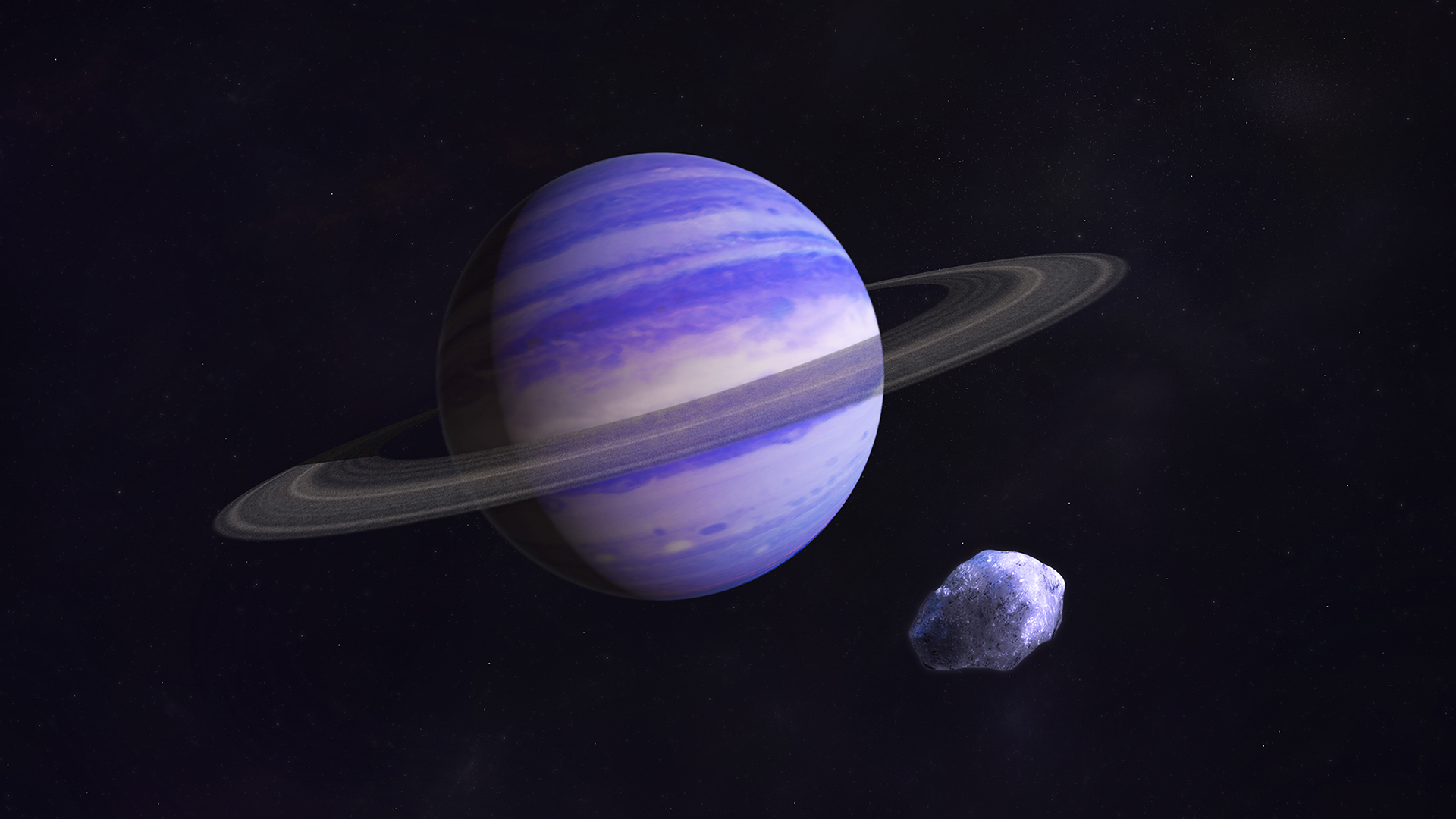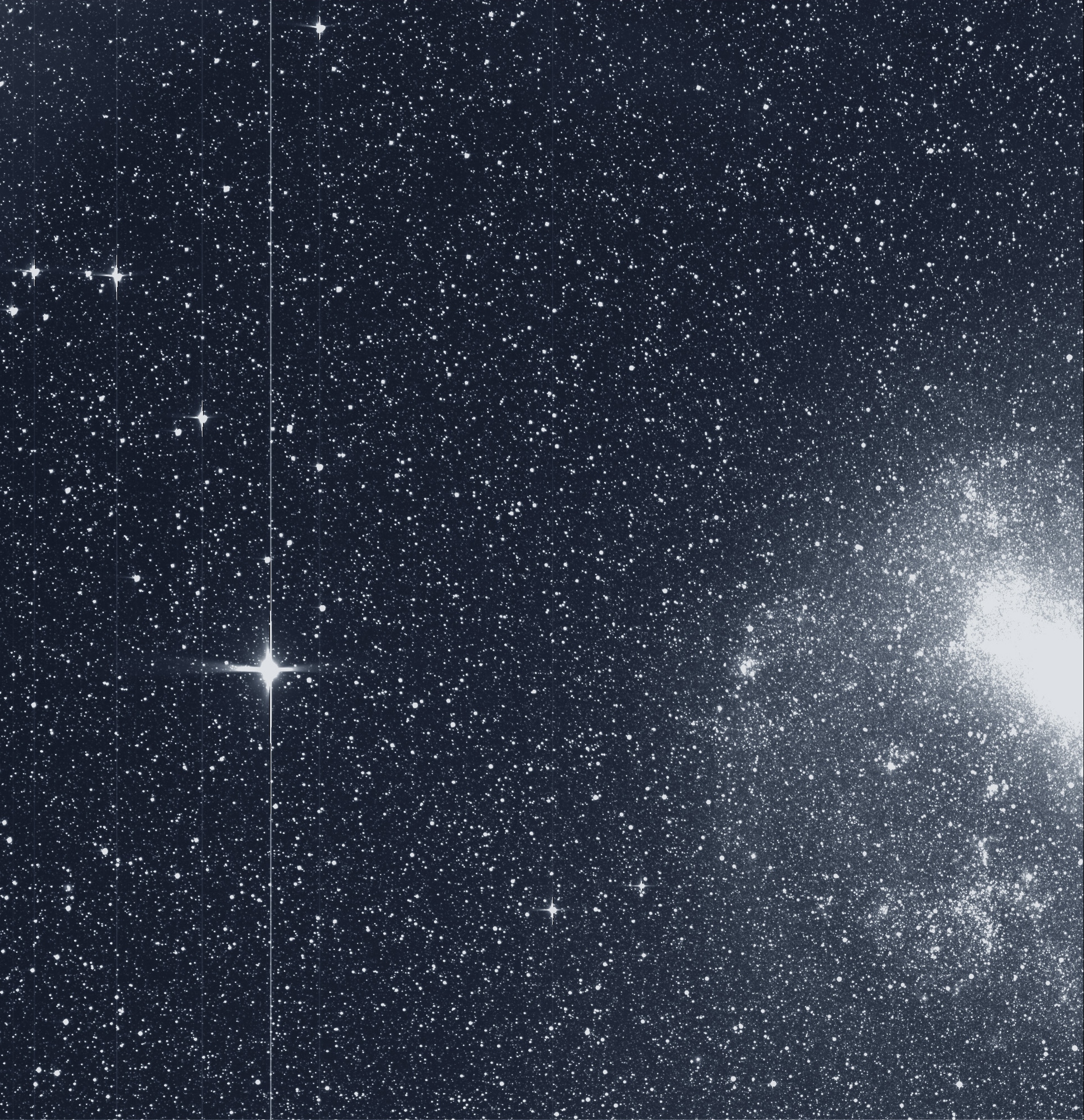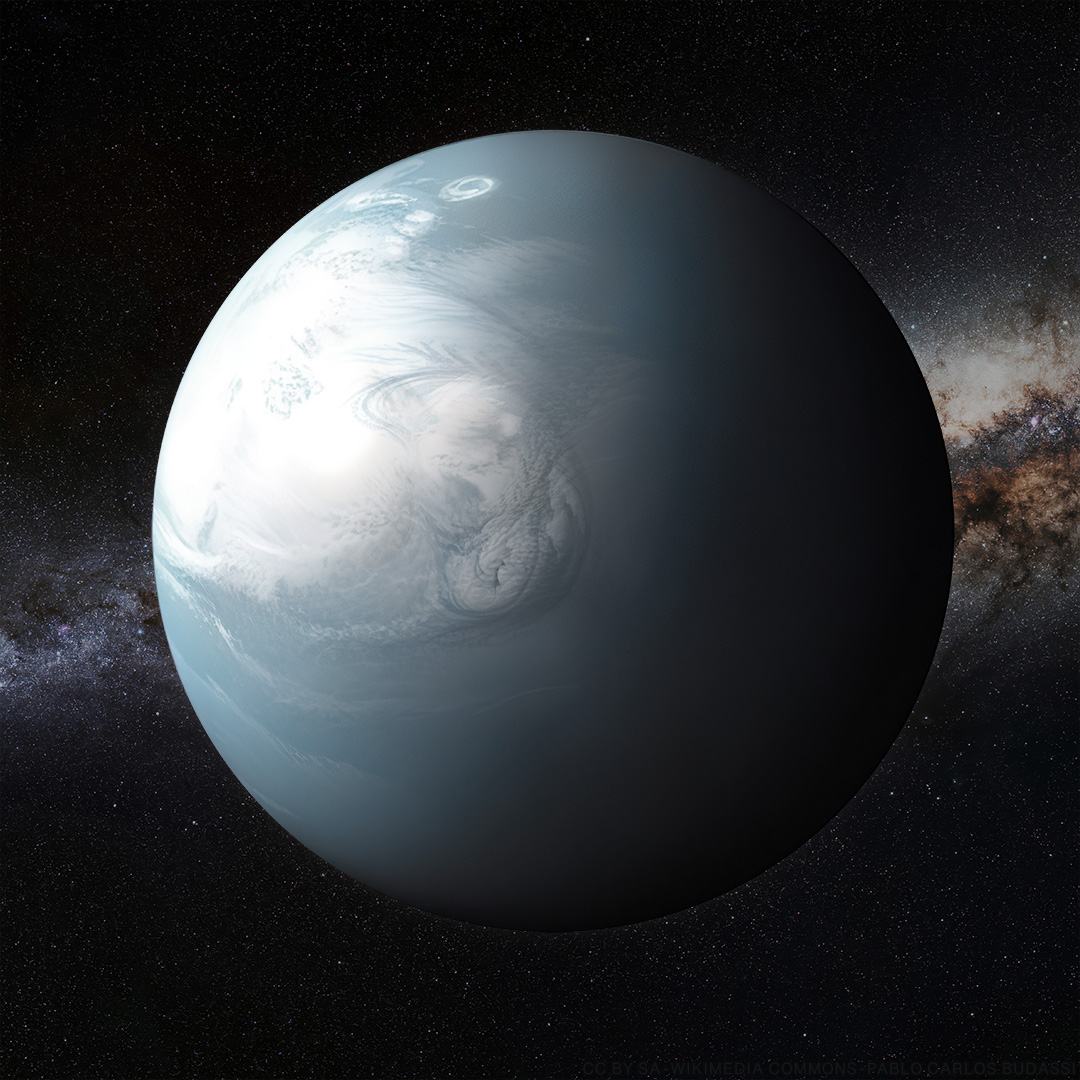|
Neptunian Exoplanet
Neptunian exoplanets are similar in size to the ice giants Neptune and Uranus in the Solar System. Neptunian exoplanets may have a mixture of interiors though all would be rocky with heavier metals at their cores. Neptunian planets typically have hydrogen- and helium-dominated atmospheres. There are several recognized subtypes of Neptunian exoplanets: * Hot Neptune – orbiting close to its star * Helium planet – a hypothetical type that can form from hot Neptune via hydrogen Atmospheric escape, evaporation, leaving a helium-dominated atmosphere * Mini-Neptune – considerably smaller than Neptune but still having a thick hydrogen-helium envelope, relatively common * Super-puff – inflated planets with unusually low mean density * Hycean planet – a hypothetical transitional type to ocean planets with a thin, hydrogen-helium-dominated atmosphere overlaying a liquid water ocean List of Neptunian exoplanets HAT *HAT-P-26#Planetary system, HAT-P-26b *HAT-P-11b GJ *Gli ... [...More Info...] [...Related Items...] OR: [Wikipedia] [Google] [Baidu] |
Super-puff
A super-puff is a type of exoplanet with a mass only a few times larger than Earth's but with a radius larger than that of Neptune, giving it a very low mean density.The Featureless Transmission Spectra of Two Super-Puff Planets Jessica E. Libby-Roberts, Zachory K. Berta-Thompson, Jean-Michel Desert, Kento Masuda, Caroline V. Morley, Eric D. Lopez, Katherine M. Deck, Daniel Fabrycky, Jonathan J. Fortney, Michael R. Line, Roberto Sanchis-Ojeda, Joshua N. Winn, 28 Oct 2019 They are cooler and less massive than the inflated low-density hot-Jupiters. The most extreme examples known are the three planets around [...More Info...] [...Related Items...] OR: [Wikipedia] [Google] [Baidu] |
OGLE-2005-BLG-390Lb
OGLE-2005-BLG-390Lb (known sometimes as Hoth by NASA) is a super-Earth ice exoplanet orbiting OGLE-2005-BLG-390L, a star from Earth near the center of the Milky Way, making it one of the most distant planets known. On January 25, 2006, Probing Lensing Anomalies NETwork/ Robotic Telescope Network (PLANET/Robonet), Optical Gravitational Lensing Experiment (OGLE), and Microlensing Observations in Astrophysics (MOA) made a joint announcement of the discovery. The planet does not appear to meet conditions presumed necessary to support life. Characteristics Mass, radius and temperature The planet is estimated to be about five times Earth's mass (5.5 ). Some astronomers have speculated that it may have a rocky core like Earth, with a thin atmosphere. Its distance from the star, and the star's relatively low temperature, means that the planet's likely surface temperature is around , making it one of the coldest known. If it is a rocky world, this temperature would make it likely th ... [...More Info...] [...Related Items...] OR: [Wikipedia] [Google] [Baidu] |
Transiting Exoplanet Survey Satellite
Transiting Exoplanet Survey Satellite (TESS) is a space telescope for NASA's Explorer program, designed to search for exoplanets using the transit method in an area 400 times larger than that covered by the Kepler mission. It was launched on 18 April 2018, atop a Falcon 9 launch vehicle and was placed into a highly elliptical 13.70-day orbit around the Earth. The first light image from TESS was taken on 7 August 2018, and released publicly on 17 September 2018. In the two-year primary mission, TESS was expected to detect about 1,250 transiting exoplanets orbiting the targeted stars, and an additional 13,000 orbiting stars not targeted but observed. After the end of the primary mission around 4 July 2020, scientists continued to search its data for more planets, while the extended missions acquires additional data. , TESS had identified 7,643 candidate exoplanets, of which 627 had been confirmed. The primary mission objective for TESS was to survey the brightest ... [...More Info...] [...Related Items...] OR: [Wikipedia] [Google] [Baidu] |
Gliese 436 B
Gliese 436 b (sometimes called GJ 436 b, formally named Awohali) is a Neptune-sized exoplanet orbiting the red dwarf Gliese 436. It was the first hot Neptune discovered with certainty (in 2007) and was among the smallest-known transiting planets in mass and radius, until the much smaller Kepler exoplanet discoveries began circa 2010. In December 2013, NASA reported that clouds may have been detected in the atmosphere of GJ 436 b. Nomenclature In August 2022, this planet and its host star were included among 20 systems to be named by the third NameExoWorlds project. The approved names, proposed by a team from the United States, were announced in June 2023. Gliese 436 b is named Awohali and its host star is named Noquisi, after the Cherokee words for "eagle" and "star". Discovery Awohali was discovered in August 2004 by R. Paul Butler and Geoffrey Marcy of the Carnegie Institute of Washington and University of California, Berkeley, respectively, using the radial vel ... [...More Info...] [...Related Items...] OR: [Wikipedia] [Google] [Baidu] |
HAT-P-11b
HAT-P-11b (or Kepler-3b) is an extrasolar planet orbiting the star HAT-P-11. It was discovered by the HATNet Project team in 2009 using the transit method, and submitted for publication on 2 January 2009. This planet is located approximately distant from Earth. Discovery The HATNet Project team initially detected the transits of HAT-P-11b from analysis of 11470 images, taken in 2004 and 2005, by the HAT-6 and HAT-9 telescopes. The planet was confirmed using 50 radial velocity measurements taken with the HIRES radial velocity spectrometer at W. M. Keck Observatory. At the time of its discovery HAT-P-11b was the smallest radius transiting extrasolar planet discovered by a ground based transit search and was also one of three previously known transiting planets within the initial field of view of the Kepler spacecraft. There was a linear trend in the radial velocities indicating the possibility of another planet in the system. This planet, HAT-P-11c, was confirmed in 20 ... [...More Info...] [...Related Items...] OR: [Wikipedia] [Google] [Baidu] |
HAT-P-26
HAT-P-26 is a K-type main-sequence star located about away in the constellation of Virgo. A survey in 2015 did not find any stellar companions in orbit around it, although a red dwarf companion with a temperature is suspected on wide orbit. Nomenclature The designation ''HAT-P-26'' indicates that this was the 26th star found to have a planet by the HATNet Project. In August 2022, this planetary system was included among 20 systems to be named by the third NameExoWorlds project. The approved names, proposed by a team from Puerto Rico, were announced in June 2023. HAT-P-26 is named Guahayona and its planet is named Guataubá, after figures from Taíno mythology. Planetary system In 2010 a transiting hot Neptune planet was detected. The transiting planet HAT-P-26b was detected by the HATNet Project using telescopes located in Hawaii and Arizona. The planet is likely formed by pebble accretion mechanism. The transmission spectrum of HAT-P-26b was taken in 2015, with the b ... [...More Info...] [...Related Items...] OR: [Wikipedia] [Google] [Baidu] |
Ocean Planet
An ocean world, ocean planet or water world is a type of planet or natural satellite that contains a substantial amount of water in the form of oceans, as part of its hydrosphere, either beneath the planetary surface, surface, as subsurface oceans, or on the surface, potentially submerging all dry land. The term ''ocean world'' is also used sometimes for astronomical bodies with an ocean composed of a different fluid or thalassogen, such as lava (the case of Io (moon), Io), ammonia (in a eutectic mixture with water, as is likely the case of Titan (moon), Titan's inner ocean) or hydrocarbons (like on Titan's surface, which could be the most abundant kind of exosea). The study of extraterrestrial oceans is referred to as planetary oceanography. Earth is the only astronomical object known to presently have bodies of liquid water on its surface, although subsurface oceans are suspected to exist on Jupiter's moons Europa (moon), Europa and Ganymede (moon), Ganymede and Saturn's mo ... [...More Info...] [...Related Items...] OR: [Wikipedia] [Google] [Baidu] |
Hycean Planet
A hycean planet ( ) is a Hypothetical astronomical object, hypothetical type of planet with liquid water oceans underneath a hydrogen-rich atmosphere. Definition The term ''hycean'' is a Blend word, portmanteau of ''hydrogen'' and ''ocean''. Due to the presence of extraterrestrial liquid water, hycean planets are regarded as promising candidates for planetary habitability. They are usually considered to be larger and more massive than Earth. As of 2023, there are no confirmed hycean planets, but the Kepler space telescope, Kepler mission detected many candidates. History The term "hycean planet" was coined in 2021 by a team of planet researchers led by Nikku Madhusudhan at the University of Cambridge, as a portmanteau of "hydrogen" and "ocean," used to describe planets that are thought to have large oceans and hydrogen-rich atmospheres. Hycean planets are thought to be common around red dwarf stars, and are considered to be a promising place to search for life beyond Earth. ... [...More Info...] [...Related Items...] OR: [Wikipedia] [Google] [Baidu] |
Density
Density (volumetric mass density or specific mass) is the ratio of a substance's mass to its volume. The symbol most often used for density is ''ρ'' (the lower case Greek letter rho), although the Latin letter ''D'' (or ''d'') can also be used: \rho = \frac, where ''ρ'' is the density, ''m'' is the mass, and ''V'' is the volume. In some cases (for instance, in the United States oil and gas industry), density is loosely defined as its weight per unit volume, although this is scientifically inaccurate this quantity is more specifically called specific weight. For a pure substance, the density is equal to its mass concentration. Different materials usually have different densities, and density may be relevant to buoyancy, purity and packaging. Osmium is the densest known element at standard conditions for temperature and pressure. To simplify comparisons of density across different systems of units, it is sometimes replaced by the dimensionless quantity "relative den ... [...More Info...] [...Related Items...] OR: [Wikipedia] [Google] [Baidu] |
Mini-Neptune
A Mini-Neptune (sometimes known as a gas dwarf or transitional planet) is a planet less massive than Neptune but resembling Neptune in that it has a thick hydrogen-helium atmosphere, probably with deep layers of ice, rock or liquid oceans (made of water, ammonia, a mixture of both, or heavier volatiles). A gas dwarf is a gas planet with a rocky core that has accumulated a thick envelope of hydrogen, helium, and other Volatile (astrogeology), volatiles, having, as a result, a total radius between 1.7 and 3.9 Earth radii (). The term is used in a three-tier, metallicity-based classification regime for short-period exoplanets, which also includes the rocky, Terrestrial planet, terrestrial-like planets with less than and planets greater than , namely ice giants and gas giants. Properties Theoretical studies of such planets are loosely based on knowledge about Uranus and Neptune. Without a thick atmosphere, they would be classified as an ocean planet instead. An estimated dividing li ... [...More Info...] [...Related Items...] OR: [Wikipedia] [Google] [Baidu] |
Ice Giant
An ice giant is a giant planet composed mainly of elements heavier than hydrogen and helium, such as oxygen, carbon, nitrogen, and sulfur. There are two ice giants in the Solar System: Uranus and Neptune. In astrophysics and planetary science the term "ice" refers to volatile chemical compounds with freezing points above about 100 K, such as water, ammonia, or methane, with freezing points of 273 K (0 °C), 195 K (−78 °C), and 91 K (−182 °C), respectively. In the 1990s, it was determined that Uranus and Neptune were a distinct class of giant planet, separate from the other giant planets, Jupiter and Saturn, which are gas giants predominantly composed of hydrogen and helium. Neptune and Uranus are now referred to as ''ice giants''. Lacking well-defined solid surfaces, they are primarily composed of gases and liquids. Their constituent compounds were solids when they were primarily incorporated into the planets during their formation, ei ... [...More Info...] [...Related Items...] OR: [Wikipedia] [Google] [Baidu] |







